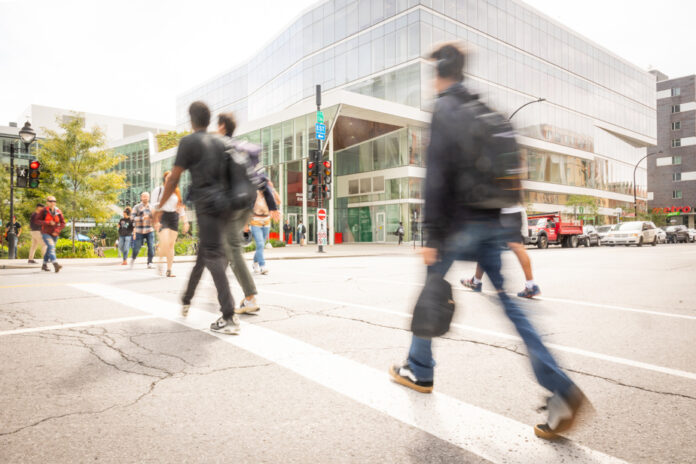Last February, the École de Technologie Supérieure (ETS) inaugurated the brand new Pavilion D, thanks to a federal investment of $27 million. In the space of a few months, this pavilion has become the haunt of a student community who work day and night on projects that often receive international awards.
Although it only opened its doors a few months ago, its impact is already widely felt. Pavilion D, equipped with cutting-edge technologies and modern equipment, is the lair of ETS student clubs, a sort of hot spot for university innovation.
In the establishment, the space devoted to research has considerably increased. We also purchased 3D printers, virtual reality rooms and high-performance microscopes.
The living environment imagined by the Montreal establishment is based on the model of “techno-societal engagement”, which is notably used at Georgia Tech in the United States as well as in several universities in Germany.
“[Pavilion D] is among the first in the world to accommodate students. Each club has its premises. We have 24 competition teams, but tell yourself that a team can be 30 students who will fly to Australia for three weeks to build a solar vehicle,” illustrates with enthusiasm the general director of the ETS, François Gagnon. .
More than 11,000 students are registered at ETS for the school year that has just started. Among them, 1000 are part of different clubs.
A sign of success and cause for pride: the School has won 13 podiums in national or international competitions over the past year, in different fields.
For several years, François Gagnon has realized that “the human side has become more important” than before and that new technologies should be designed to be put “at the service of society”.
“We go further than just a rocket scientist with our little calculations. We are engaged with technology to improve the world; it’s important to us,” he says.
“Engineers and scientists, because of the rigorous methodology, we are wary of emotions. But when we see the major current human challenges, for the new generation, emotions are important. We must overcome this modesty, because it does not prevent us from making calculations. »
The young people involved are an integral part of this movement. They welcomed their new playground, Pavilion D, with open arms.
“When I made the mistake of closing the premises during the pandemic, the students took everything and went to rent elsewhere,” he recalls. It’s when we try to put the brakes on commitment that we realize it’s so powerful. It became one of the first elements of my speech. »
And it’s not over: by the end of the year, the ETS plans to complete the construction of Pavilion F at the corner of Peel and Notre-Dame streets. One of the projects that benefited from the boost from Bill 66, the aim of which was to accelerate 180 infrastructure projects by notably reducing the deadlines for environmental assessments, will share certain similarities with its older brother.





